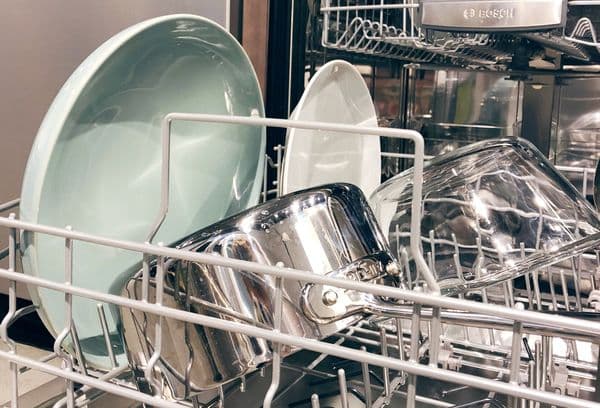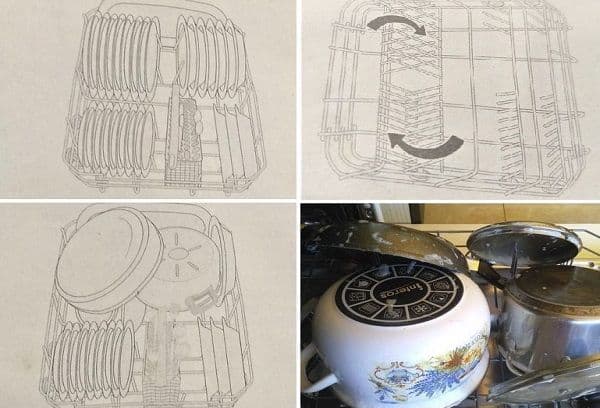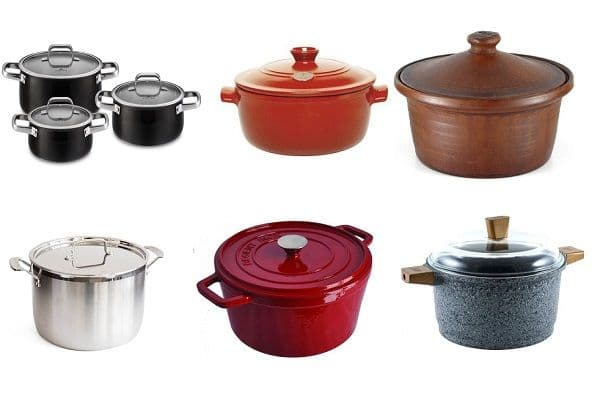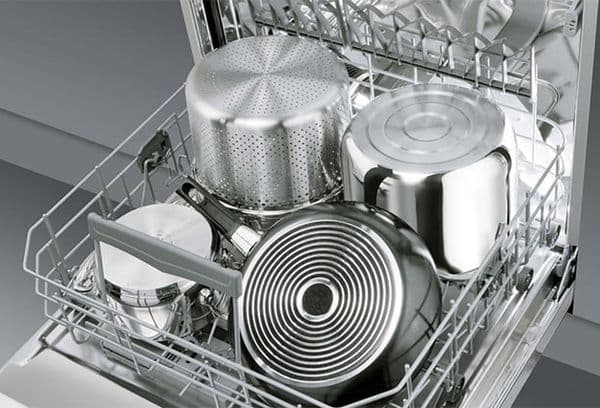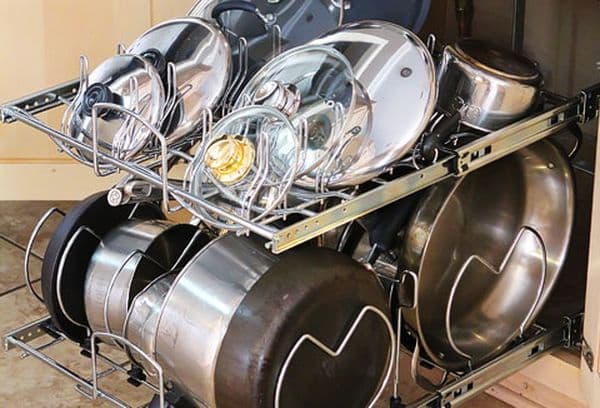Which pans can and cannot be washed in a dishwasher
Content:
The dishwasher greatly facilitates the kitchen, and when the hot water is turned off, it becomes a real salvation. However, not all types of pots can be washed in a dishwasher. A number of materials will not tolerate such a procedure. As a rule, a conflict arises with detergents and temperature. And these factors are a way around.
How to compactly load pans
The flow of water in most household dishwashers comes from below: sprinklers are located under the baskets with dishes. Therefore, it makes sense to place flat objects at an angle so that they fall under the stream. But cookers, pans, salad bowls, etc., deep objects must be laid upside down - otherwise the water will not be able to drain, collect in a puddle, and the dishes will be washed worse and, most importantly, will not dry.
Tip
purityis.decorexpro.com/en/ does not recommend machines with a single sprinkler located above the dish tray - rinsing deep containers will be bad.
How to stack the pots depends on the size of the tray and the presence of dividing walls and stops in it. The general rule is only one - pots, pans and large salad bowls are loaded into the lower tray.
The instructions for the dishwasher must be given instructions. It usually provides drawings on how to properly load the device. Pots do not have to be placed straight - a slight slope is acceptable, if only there is no strong overlap - otherwise the sprayers will not be able to sprinkle the dishes with water. You can not stack in a pile - objects simply will not be washed.
From personal experience
If the car is old, then it does not have enough pressure, and even neatly upside down the standing pan remains dirty inside. Be sure to keep the nozzles on the sprinklers clean.
Illustrations from the instructions for the old "Electrolux" and an example of its loading in practice:
What materials can not be put in the dishwasher
Since detergents for machines are much more aggressive than for manual washing, and the water temperature reaches 90 degrees, you can not put porous, brittle and easily rusting objects into the device.
What pots should not be washed in a dishwasher:
- Salads and tureens in the form of pots (from thin porcelain or glass, majolica, using the Gzhel, Khokhloma technique, etc.). Fragile materials from vibrations and too hot water quickly crack, become cloudy or lose their glaze.
- Clay and ceramic pots for baking, but without glaze - these materials intensively absorb the detergent and are reluctant to give it away when rinsing, so that the dishes will be toxic at the exit.
- Teflon, ceramic and other non-stick pans without a special protective layer - after a few sinks such pans “peel off” to an aluminum or steel base and lose their key properties. Multicooker bowls fall into this category - they are only shown manual care.
- Aluminum - usually cleaning in the dishwasher turns into a disaster for them. Detergent peels off the protective film of oxides, the metal reacts with water. The result is a darkening and unsuitability for food purposes.
- Cast iron cauldrons and pans - this dish is too heavy and easily injures the fasteners, but the main thing is that the material rusts from prolonged humidity, and in the dishwasher, the tab usually remains until the morning.
- Any with wood or plastic handles, not designed for strong heating.
A separate word about enameled dishes. If it is iron and has chips on it, it will rust in the dishwasher.If the enamel is old or cheap, it will quickly crack. But expensive, high-quality enamel on top of cast iron is one of the best solutions. It does not peel and does not allow metal to oxidize. The only limitation is by weight. A small 2 liter pan can still be put in the tray, but a 5-liter cauldron is not worth it.
Tip
Even very good enamel will last longer if you do not torment it with too aggressive detergents. Therefore, cleaning in the PMM is acceptable, but not desirable.
What pots can be washed in a dishwasher without restrictions:
- from stainless steel;
- small cast iron with high-quality enamel;
- glass for baking and microwave (designed for high temperatures);
- modern (and usually not cheap) pots with a protective layer on top of ceramics or non-stick coatings, preferably steel, rather than aluminum based.
Tip
Information about whether automatic washing is allowed for the pan must always be at the bottom or in the instructions for the pan. Pay attention to the icons before buying.
How to get around bans
There is nothing absolute in our world, and materials that do not tolerate a dishwasher can be loaded into it. How?
First of all, it is worth buying an aggregate with several modes, and even better - with a choice of temperature. Porcelain, glass, plastic, wood are afraid of high temperatures and prolonged washing. If you put a short cycle with heating to 40 °, there will be no problems.
Cast-iron small pots are most afraid of prolonged moisture. They do not need to be run in intensive mode - select a quick program and immediately after drying put the dishes in the cupboard. All rust and swelling are not expected.
Important
The instructions for most dishwashers explicitly say: before loading into the device you need to clean off the leftover food from the dishes. This not only increases the washing efficiency, but also extends the life of the filters and the device as a whole.
Ceramics, Teflon, aluminum, enamel - entrust only rinsing to the machine, and at a gentle temperature. Rub with a sponge with a gel for manual washing, discarding the remaining food in a bucket and load it in the dishwasher - you will not have to spend time rinsing and drying, and the dishes will not suffer from an aggressive detergent.
Can the unit wash burnt or dried food? Unfortunately, in most cases, no. Even the intensive mode can not cope, although the most modern models and detergents give a noticeable result. All the same resource purityis.decorexpro.com/en/ recommends soaking dried or burnt dishes for 30-120 minutes, remove the dirty layer with a sponge, and only then send items to the PMM.
Really powerful dishwashers are bulky, very expensive and designed for food service outlets. Home models, even the most modern ones, need human help and regular maintenance of filters, sprinklers and a pallet. If there is not even the slightest desire to even soap dishes, then buy only those items that bear the sign "allowed to wash in the dishwasher." Today there are most of such samples, but still check the bottom with the signs or instructions, so as not to be mistaken.
